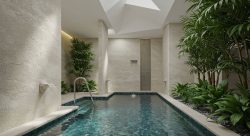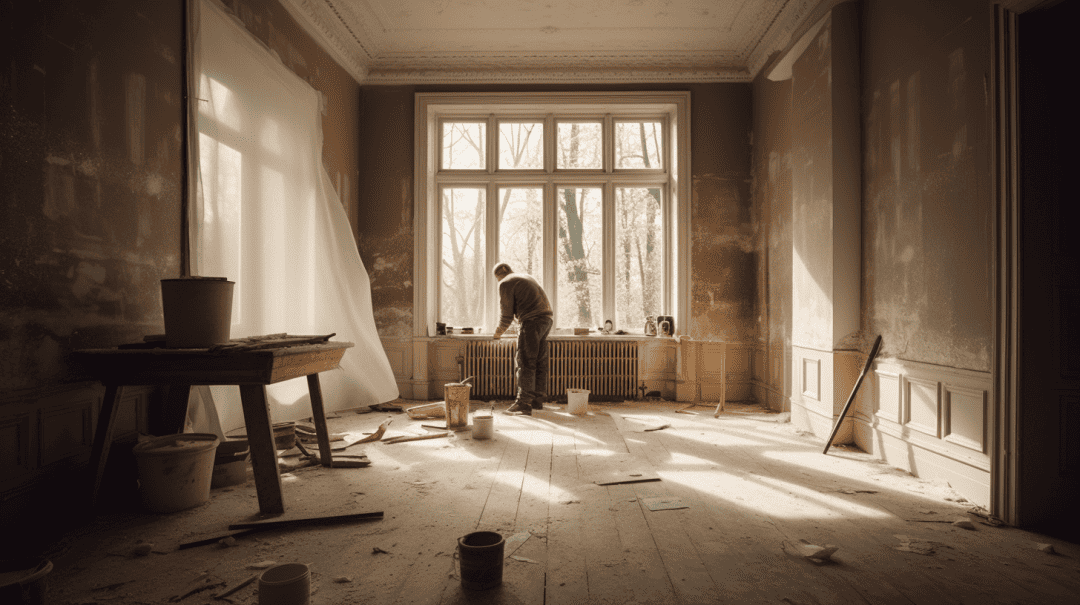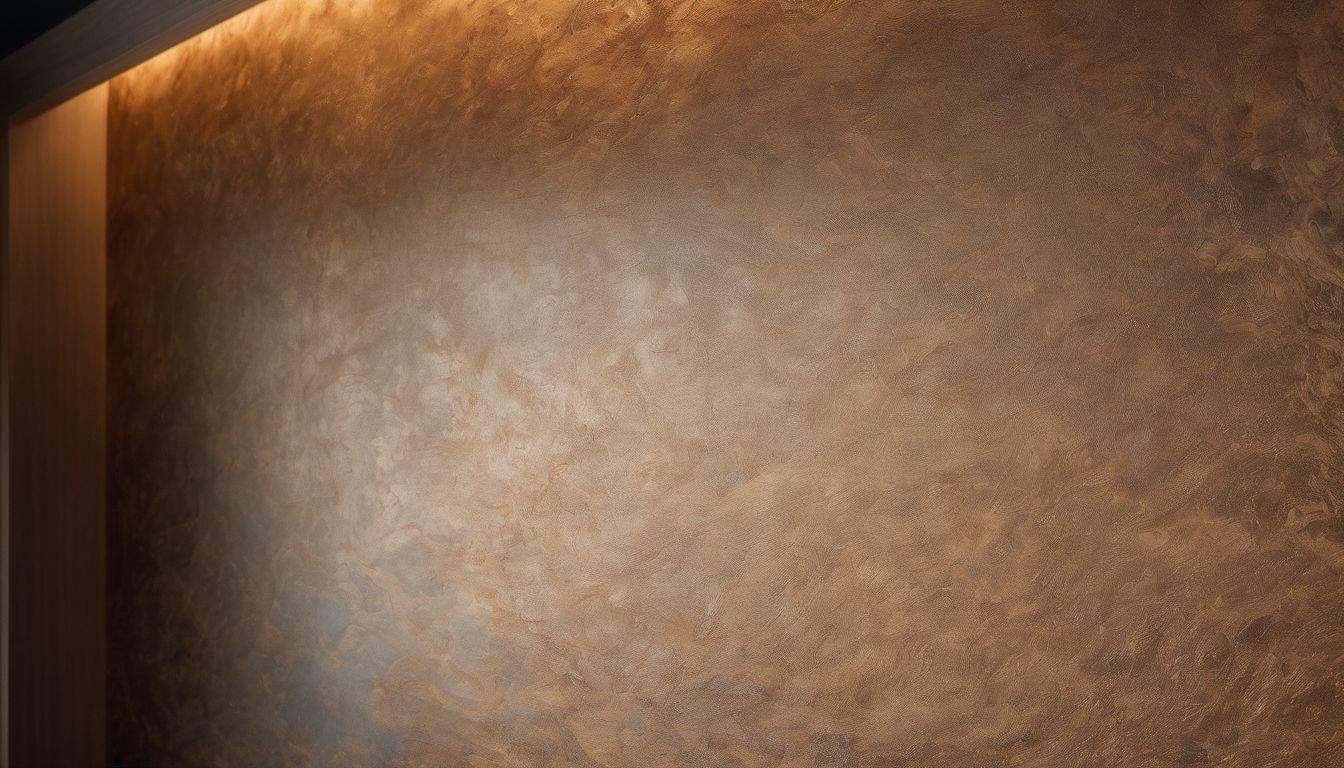Transforming Bathrooms with Durable, Energy-Efficient EIFS
Looking to give your bathroom a durable, energy-efficient upgrade? The Exterior Insulation and Finish System (EIFS) might be right up your alley! This blog post will explore how EIFS can transform your bathroom from basic to exceptional, enhancing not only its aesthetic appeal but also its practicality. Curious? Stick around for insights that could revolutionize your next renovation project!
Key Takeaways
- EIFS stands for Exterior Insulation and Finish System, a building cladding that provides insulation and a finished look to your home.
- Using EIFS in bathroom renovations can help reduce energy usage by stabilizing indoor temperatures due to its exceptional insulation properties.
- While installation and maintenance costs are higher than traditional stucco, EIFS proves cost-effective in the long run due to its durability, low ongoing maintenance needs, and significant reduction in energy costs.
- Other key benefits of using EIFS include moisture resistance which prevents mold and mildew build – along with an aesthetic appeal that can be customized according to the homeowner’s preference.
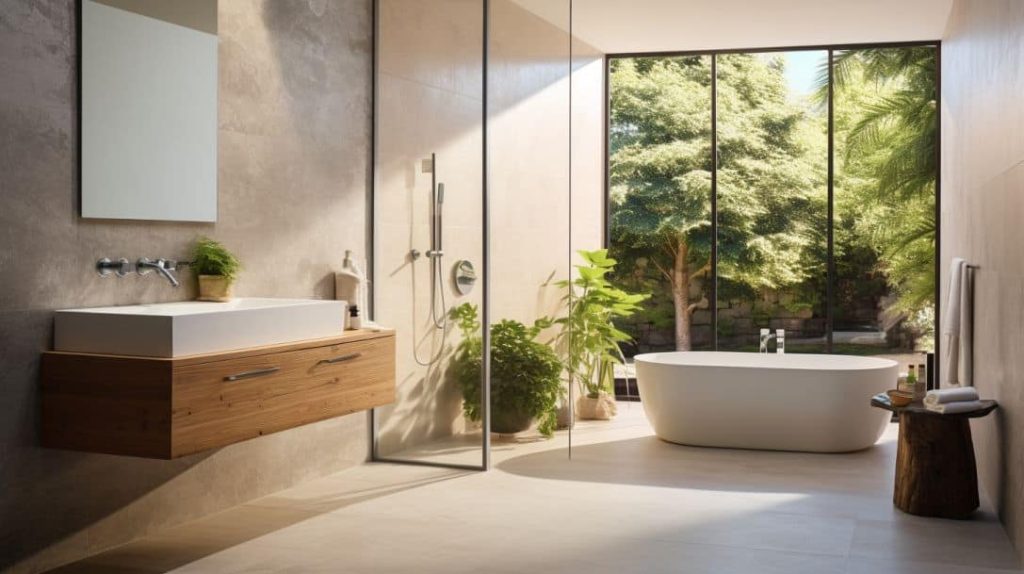
Explanation of EIFS
EIFS stands for Exterior Insulation and Finish System. It’s a type of building cladding system that adds insulation to the exterior walls of a structure. Unlike traditional stucco, EIFS is composed of multiple layers that work together to prevent heat and moisture transfer, effectively enhancing the energy efficiency of your home.
Among these layers are an air barrier, insulation board, base coat, reinforcement mesh, finish coat, and finally an optional water-resistive barrier. As a homeowner choosing EIFS as part of your renovation project means enjoying long-term savings through reduced energy usage.
Crucially though, it requires professional installation due to its complexity in the application process compared to other siding options like wood or brick; this ensures maximum performance and durability against harsh weather conditions.
What is EIFS?
EIFS, or Exterior Insulation and Finish Systems, is a type of building cladding that encompasses an insulation board secured to the exterior wall surface, a durable water-resistant base coat applied on top of it, and a finish layer for aesthetic appeal.
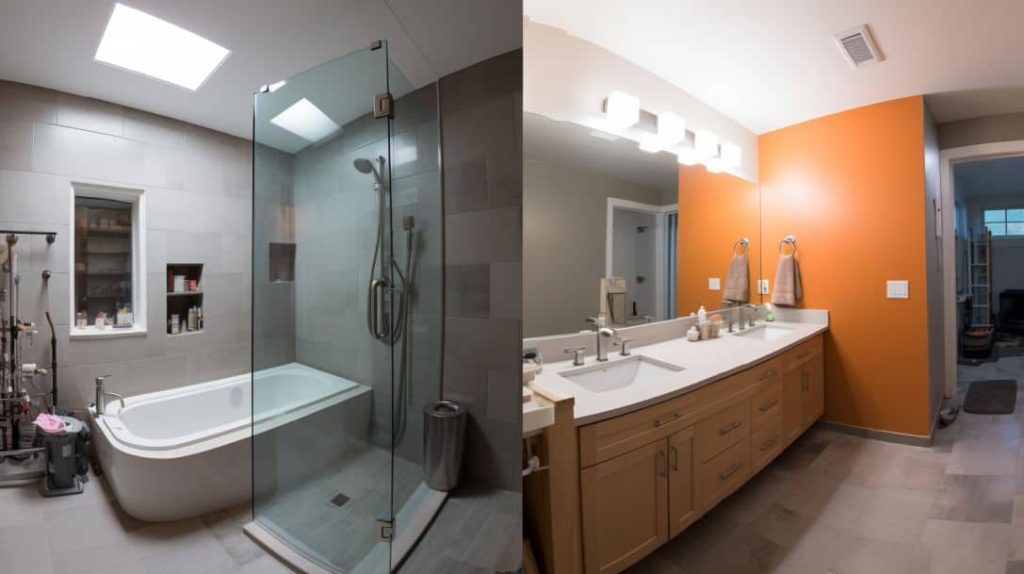
Six layers of EIFS
The Exterior Insulation and Finish System (EIFS) comprises six crucial layers that skilled applicators use to craft detailed exterior designs. Each layer brings its specific benefit, making EIFS a highly preferred choice for homeowners seeking both functionality and aesthetics. Here’s what makes up the EIFS:
- Adhesive Layer: This is the first layer that binds EIFS to your home’s exterior. It gets applied straight onto the surface of your existing construction.
- Foam Insulation Board: The second layer consists of expanded polystyrene foam board which provides next-level insulation.
- Base Coat: Applied on top of the insulation board, this water-resistant coat serves as a protective barrier against harsh weather conditions and potential damage.
- Reinforcing Mesh: Providing additional structural strength, this fourth layer ensures the durability and longevity of the installed EIFS.
- Finish Coat: This final aesthetic layer gives homeowners freedom in terms of color choices and design flexibility, contributing to appealing architectural designs.
- Optional Water Resistive Barrier (WRB): While not always necessary, experts suggest including an extra WRB for maximum water resistance – especially beneficial in regions with adverse weather conditions.
Pros of Using EIFS
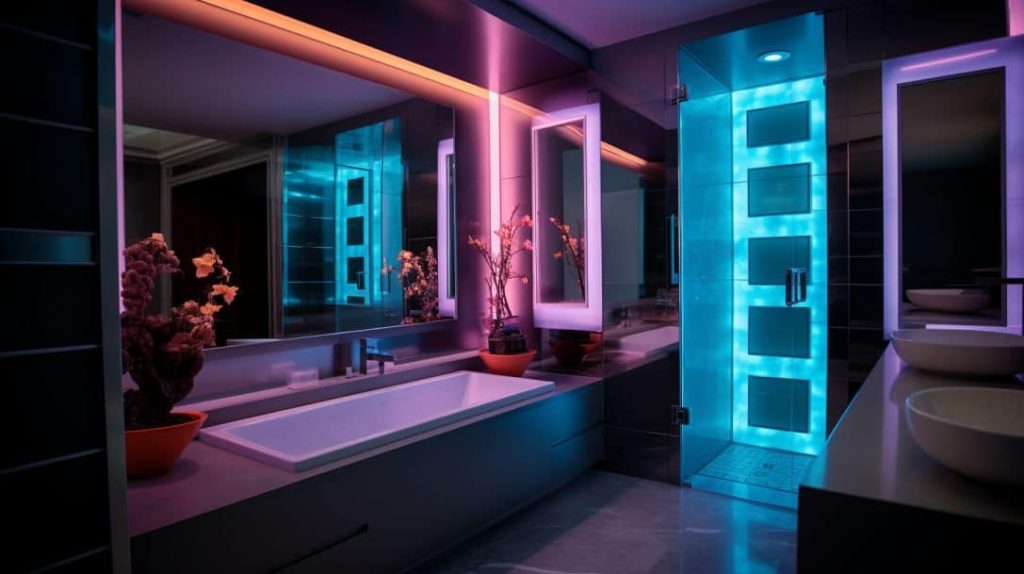
The Exterior Insulation Finishing System (EIFS) offers an extensive range of benefits, with the most noteworthy being its impressive durability against harsh weather conditions and exceptional energy efficiency, potentially saving homeowners on heating and cooling costs.
Durability against harsh weather
EIFS stands out with its exceptional weather resistance, making it a worthy option for areas facing extreme temperatures. The design incorporates a fiberglass layer, enhancing durability beyond that of traditional stucco options.
With multiple layers offering reinforced toughness and flexibility, EIFS remains unyielding against harsh climatic conditions. Furthermore, tests have validated the high resilience of this material under adverse weather impacts.
Often referred to as synthetic stucco, EIFS combines insulating capabilities and waterproofing benefits with formidable weather resistance – features that can significantly trim down your costs over time.
Energy efficiency
EIFS boosts the energy efficiency of your home in a commendable way. Its design offers continuous insulation, significantly reducing air infiltration, and stabilizing indoor temperatures.
This unique characteristic leads to decreased energy consumption, helping you conform to contemporary energy codes and save money on utility bills. Particularly in bathroom renovations, using EIFS ensures a comfortable and moisture-free space due to its excellent condensation resistance properties.
Not only does it contribute to building sustainability but it also proves cost-effective by lowering long-term energy costs.
How EIFS Can Improve Your Next Remodeling Project
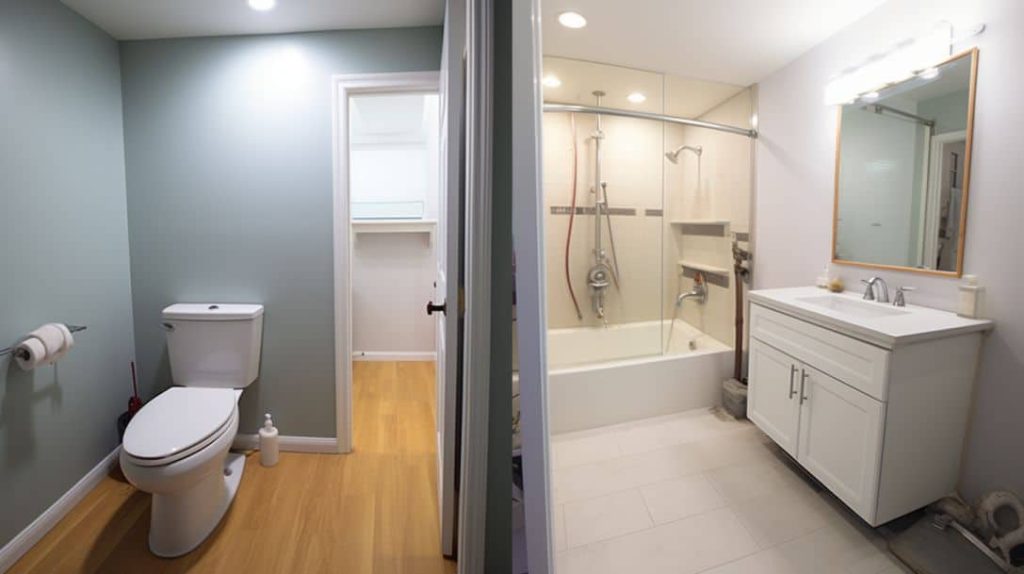
Exterior Insulation and Finish Systems (EIFS) can substantially upgrade your next bathroom renovation project due to its superior insulation properties and flexibility. Its advanced air sealing capabilities minimize heat loss, reducing energy usage significantly.
With evidence showing up to a 55% reduction in air infiltration compared to traditional construction materials like brick or wood, EIFS guarantees improved thermal performance for any space.
One of the striking benefits of EIFS is its crack resistance which comes from its unique design flexibility. This quality ensures it tolerates expansion and contraction usually caused by temperature fluctuations, thus offering a long-lasting solution for remodeling projects.
Furthermore, this versatile material enhances not just the functionality but also the aesthetic appeal of your home with a modern look that’s certain to impress.
Cons of Using EIFS
While EIFS offers numerous benefits, it does come with a few drawbacks such as higher initial installation and maintenance costs compared to traditional stucco. Additionally, if not properly installed or maintained, EIFS can be vulnerable to water damage which could lead to costly repairs.
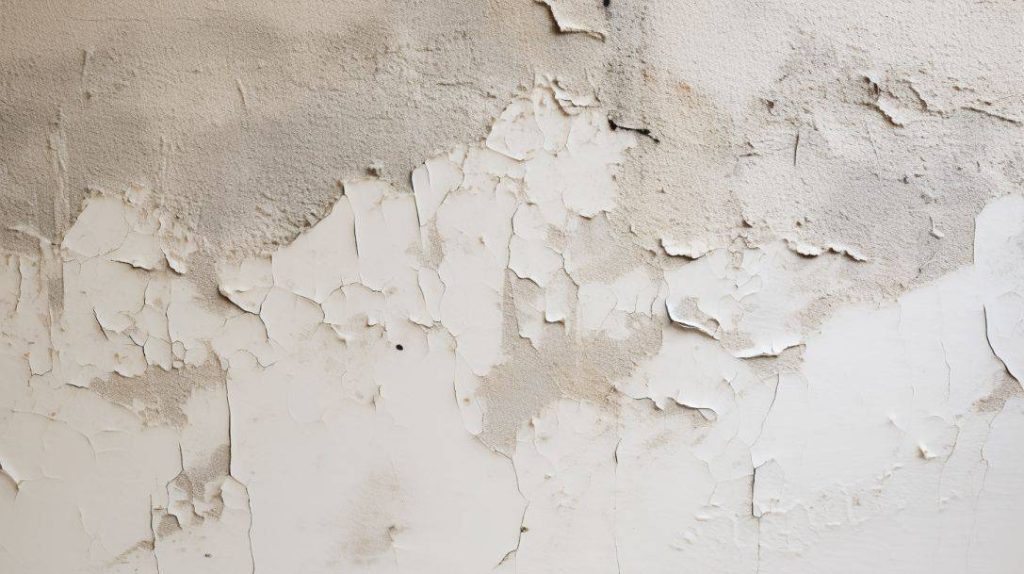
Installation and maintenance costs
Installing EIFS stucco demands a complex, time-consuming process compared to traditional stucco. It requires an understanding of the intricate steps involved and the use of more materials, both factors contributing to cost increases.
For full installation, homeowners should prepare for expenses between $8 and $14 per square foot of wall space. However, if siding replacement becomes necessary in the future, costs might escalate to as high as $16 per square foot.
Despite these initial expenses, maintenance costs are relatively low and only minor remediation may be required over time — making EIFS a cost-effective choice in the long run.
Vulnerability to water damage
Water damage poses a serious threat to EIFS, making it one of its significant downsides. This susceptibility is due to potential failures related to water intrusion or condensation.
Cracks in the window units allow water penetration independent of the cladding causing further issues. More concerning is the moisture accumulation within wall cavities that eventually leads to wood damage when using barrier EIFS cladding.
The soft base under thin stucco coating renders EIFS vulnerable, which often results from improper attachment to the building frame and lack of an appropriate drainage system. Such vulnerabilities could lead to considerable long-term harm if not adequately addressed during installation and use.
Advantages of EIFS for Bathroom Renovations
EIFS offers significant advantages for bathroom renovations, notably its superior resistance to moisture and ability to prevent mold and mildew buildup, thus ensuring a healthier, safer environment within the bathroom.
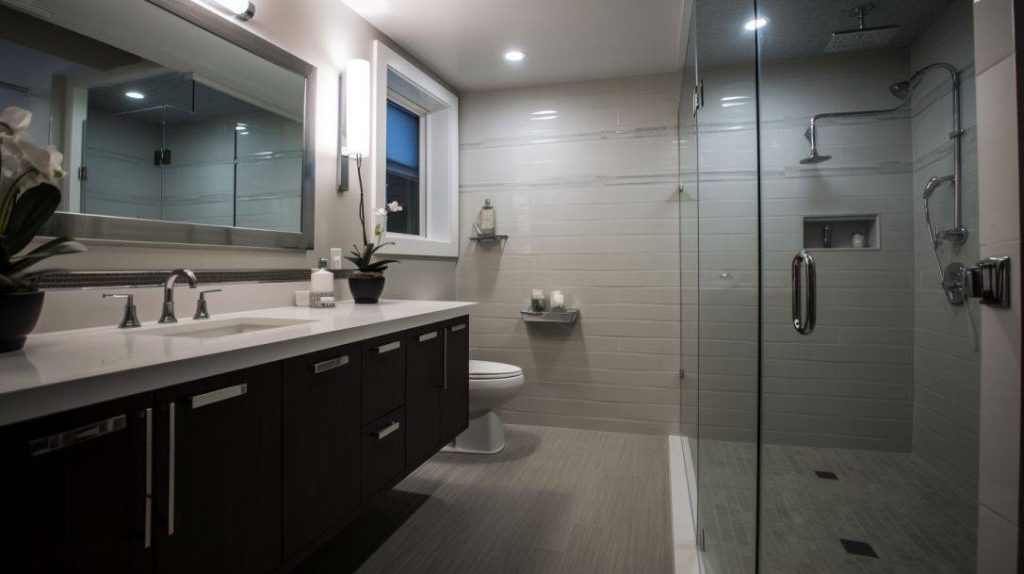
Moisture resistance
EIFS stands as a superior choice for bathroom renovations due to its unrivaled moisture resistance properties. This durable material provides an effective barrier against heat and moisture transfer, essential features in any wet environment such as the bathroom.
Not only does EIFS fend off dampness, but it also resists cracking caused by shifting foundations or thermal expansion. Plus, it can withstand the elements – even freeze/thaw cycles don’t stand a chance against this robust product.
Potential issues with condensation or water intrusion are minimized with proper EIFS installation and maintenance. Therefore, by choosing EIFS for your renovation project, you are investing in exceptional moisture control that ensures the longevity and durability of your walls while creating an aesthetically pleasing finish.
Mold and mildew prevention
EIFS acts as a protective shield for your home against moisture, reducing the chances of mold and mildew build-up. This barrier is water-resistant, ensuring that unwelcome dampness stays away from your bathroom surfaces.
Consequently, not only does this safeguard your wall finishings but it also promotes a healthier living environment by preventing the growth of harmful mold spores. The capability of EIFS to control moisture levels extends its benefits beyond just aesthetics; hence incorporating it into your bathroom renovations proves to be an effective strategy against mold and mildew prevention.
With continually optimized conditions in your remodeled space, enjoy enhanced home health through fewer dust particles and lower maintenance needs such as frequent painting. Mold resistance is truly one significant advantage offered by EIFS for bathroom renovations.
Crafting Captivating Interior Spaces with EIFS Installation and Repair
Professionals use EIFS to design captivating interior spaces due to its versatility and aesthetic appeal. In the hands of skilled contractors, EIFS molds into any shape or design, enabling homeowners to achieve a unique personal touch in their homes’ interiors.
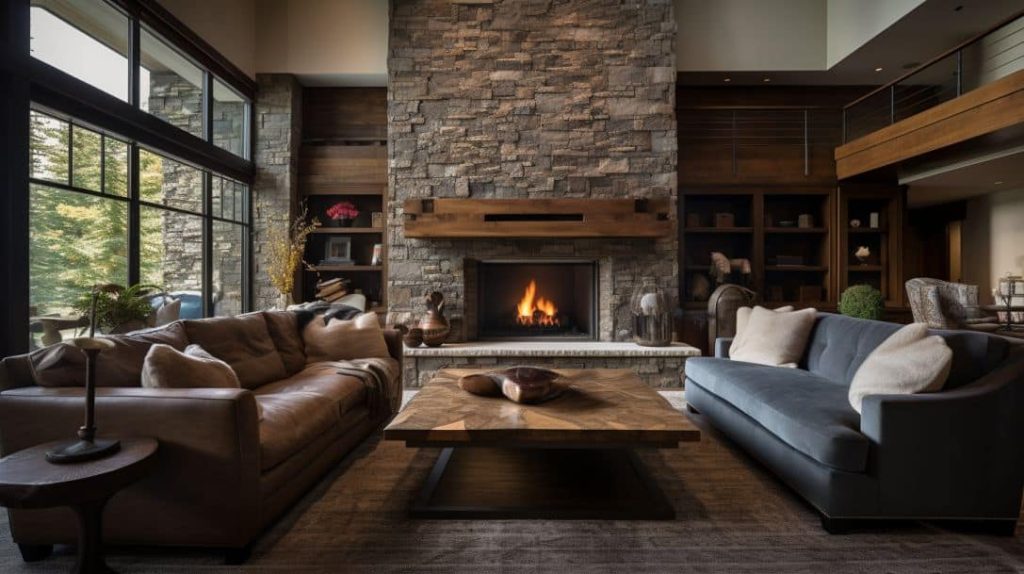
From arches and curves to intricate designs and patterns, there is no limit to what one can make using EIFS. This material also offers a wide range of texture options like smooth surfaces or rough stucco-like finishes; it even provides different color choices for artistic expression.
Beyond beautification, installing EIFS contributes positively to your home’s comfort levels as well since it significantly enhances energy efficiency by reducing air infiltration. The technology behind the insulation power of EIFS lies in its multi-layered structure that works seamlessly together to keep heat out during summer months while retaining internal warmth in colder seasons.
The durability feature seals the deal for most homeowners too! Withstanding harsh weather conditions doesn’t pose much of a challenge for properties clad with this robust system. If damage does occur over time, fret not! Repairing small nicks or cracks on an EIFS surface proves relatively straightforward without needing extensive work done on entire sections.
Installing and maintaining an EIFS system requires specialized skills though; hiring professionals would be necessary despite the higher upfront costs involved compared to DIY methods involving traditional construction materials such as siding.
But remember – it’s always worthwhile investing wisely towards long-term benefits instead of settling for short-sighted solutions providing temporary relief only!
Therefore whether you’re planning new construction projects aiming for heightened energy-efficiency standards or simply wanting elapsed HVAC systems upgraded without compromising comfort within your existing residential setup – choosing Exterior Insulation Finish Systems (EIFS) never disappoints when striving for captivating interior spaces creation-wise coupled with affordable yet quality insulation concerns prioritizing both functional benefits alongside eye-catchy aesthetics enhancement aspects altogether perfectly balanced within one solution altogether indeed!
Upgrading Bathroom Insulation: EIFS vs. Traditional Stucco
Dive into a comprehensive comparison between bathroom insulation options; highlighting EIFS’s superior energy efficiency, aesthetics, and durability over traditional stucco. Curious to uncover the best option for your renovation? Continue reading.
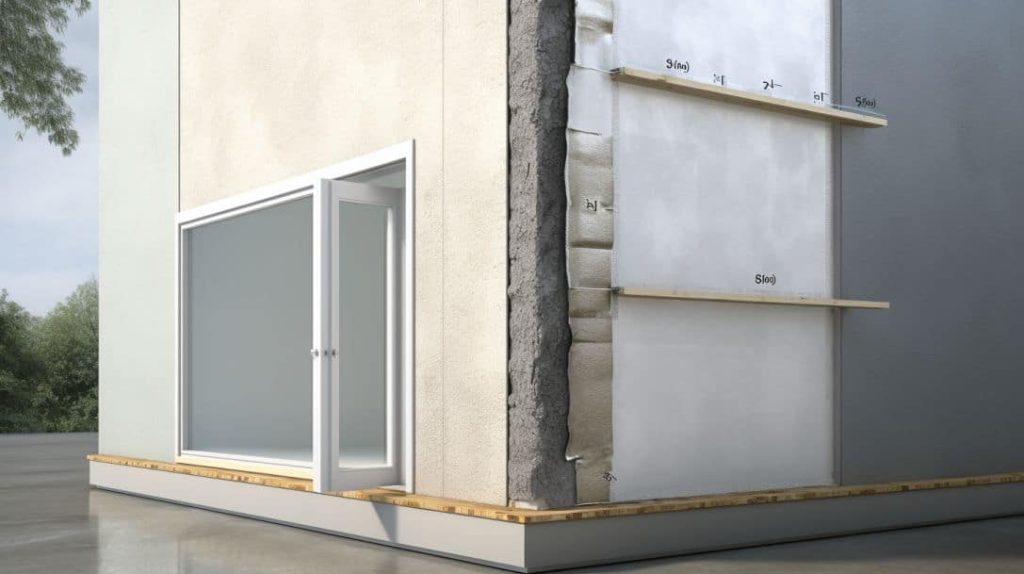
Comparison of materials
When it comes to renovating your bathroom, choosing the right materials is crucial. Below is a comparison between EIFS and traditional stucco, two popular options for bathroom renovations.
| Criteria | EIFS | Traditional Stucco |
| Durability | EIFS is highly durable due to the inclusion of a fiberglass layer, offering more resistance to harsh weather conditions. | Traditional stucco is also durable, but it lacks the additional fiberglass layer that EIFS has, making it less resistant to harsh weather. |
| Energy Efficiency | EIFS has a higher R-value than traditional stucco, reducing air infiltration by up to 55% compared to standard brick or wood construction. | Although traditional stucco offers some energy efficiency, it cannot compete with the high R-value of EIFS. |
| Flexibility | EIFS is more flexible than stucco and can adjust as a building shifts, preventing cracks and damage over time. | Traditional stucco is less flexible, making it more susceptible to cracking if the building shifts. |
| Appearance | EIFS resists fading, chalking, and yellowing due to its acrylic and polymer makeup, ensuring a long-lasting aesthetic appeal. | While traditional stucco has a classic look, it may fade and yellow over time. |
| Cost-effectiveness | Although EIFS may have a higher upfront cost, its energy efficiency and durability can lead to long-term savings, making it a cost-effective choice for bathroom renovations. | While traditional stucco may be cheaper upfront, its lack of energy efficiency and potential for damage may lead to higher costs in the long run. |
It’s clear that both EIFS and traditional stucco have their strengths and weaknesses. However, if you’re looking for a material that offers superior durability, energy efficiency, and aesthetic appeal for your bathroom renovation, EIFS may be the better choice.
Benefits of EIFS for bathroom insulation
EIFS (Exterior Insulation and Finish Systems) brings a host of benefits for bathroom insulation. Most importantly, they remarkably reduce air infiltration by up to 55% compared to standard brick or wood construction.
The result? A major upgrade in energy efficiency as less heat escapes from your home. This system also insulates from the outside in, which helps stabilize the interior environment and cut down on energy consumption further.
With its higher R-value than traditional stucco, EIFS proves superior in offering better insulation, resulting in fewer cracks over time. Besides these impressive functional advantages, EIFS also enhances the aesthetic appeal of bathrooms with its modern and sleek look.
It stands as an excellent barrier against heat transfer and moisture—an essential consideration for damp areas like bathrooms—trumping other siding options hands down.
How EIFS Can Improve Energy Efficiency in Your Bathroom
Enhancing your bathroom with EIFS curtails energy consumption by minimizing air infiltration and temperature fluctuations, creating a more sustainable space. Discover the remarkable impact this system can have on your energy efficiency in the full article.
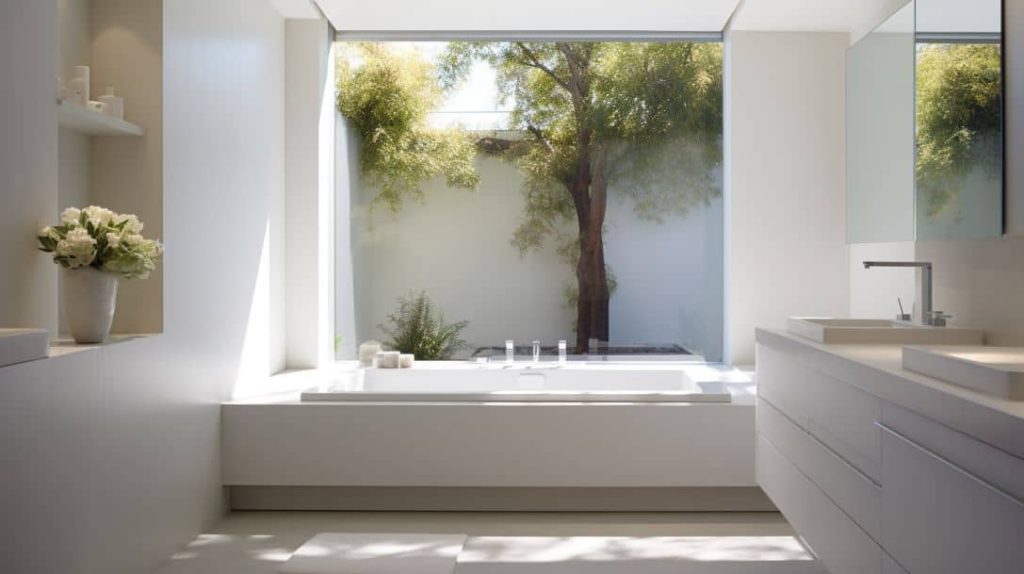
Reduced air infiltration
EIFS cuts down on air infiltration, dramatically improving the energy efficiency of your bathroom. This advanced insulating system reduces unwanted airflow by up to 55% compared to traditional construction methods.
Such comprehensive insulation ensures a constant indoor temperature, alleviating strain on HVAC systems and resulting in significant energy savings.
The application of EIFS with a fluid-applied air barrier bolsters this effect even further. It creates an impervious seal, eliminating thermal bridges and reducing heat transfer. Therefore, not only does it help maintain comfortable conditions inside, but it also contributes to reducing the household’s overall carbon footprint.
Decreased energy usage
Employing EIFS in your bathroom renovation can significantly reduce energy usage. This innovative material insulates the room from outside temperatures, stabilizing the indoor environment and decreasing overall energy consumption.
It’s a change that not only benefits our planet by conserving resources but also lightens the load on your wallet with less demand for heating and cooling. The savings don’t stop there; since EIFS improves thermal efficiency, you’ll find smaller equipment requirements for maintaining comfortable temperatures in your bathroom.
A study conducted by the 2023 Better Buildings Awards Program supports these claims, showing that buildings with EIFS cladding used nearly 45% less energy.
EIFS is a Perfect Solution for Achieving Modern Aesthetics in Bathrooms
EIFS can elevate the look of your bathroom with its sleek, versatile design capabilities. With this system, you have a myriad of textures and colors at your disposal to create a vibrant and contemporary space.
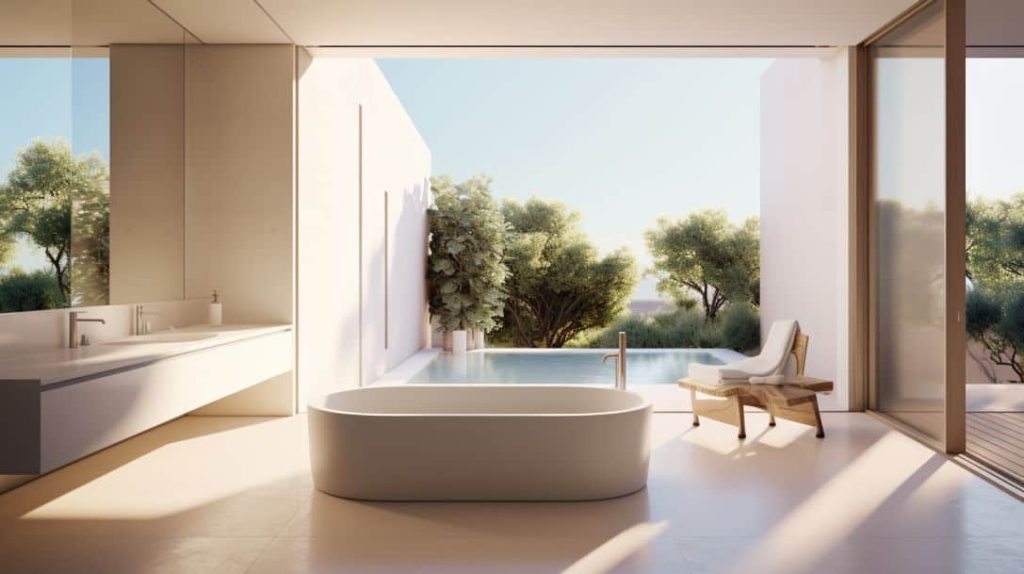
This not only transforms your bathroom into an architectural masterpiece but also enhances its overall aesthetic appeal.
Moreover, EIFS integrates seamlessly with both traditional and modern construction methods. From simple accents to complete wall systems, it is designed for a streamlined application that results in a smooth, uniform finish.
You do away with the chunky brick exteriors or conventional siding; instead, you embrace innovative technology that resonates with the minimalistic beauty of modern designs yet maintains a touch of sophisticated elegance.
Furthermore, while bringing out this classy style in bathrooms, EIFS also boosts energy efficiency significantly. It acts as a formidable barrier against air infiltration which consequently reduces heating and cooling costs – thus making it not only desirable from an aesthetic standpoint but also economically viable over time due to lower lifetime costs from reduced maintenance requirements.
Throw in potential eligibility for tax credits or rebates because of improved energy performance, makes it’s all the more appealing.
Cost-Effectiveness of EIFS for Bathroom Renovations
Evaluate the cost-effectiveness of utilizing EIFS for your bathroom renovation project, taking into account both initial expenditure and potential long-term savings, as well as opportunities for tax credits and rebates.
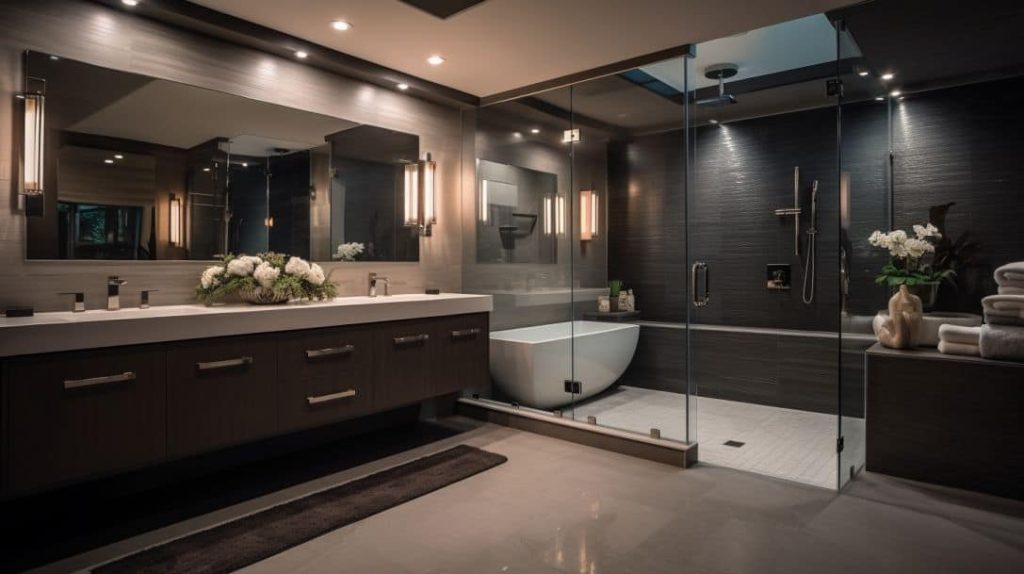
Initial cost vs. long-term savings
The initial investment in EIFS for your bathroom renovation might be a bit steeper than traditional materials, but the long-term savings can offset this. Here’s a comparison table to help illustrate these costs and savings:
| Cost Factor | EIFS | Traditional Materials |
| Initial Cost | Investment might be higher due to the technical requirements of EIFS installation. EIFS is a unique material that requires professional installation. | Initial cost of traditional materials like tiles or stucco might be lower. |
| Long-Term Energy Savings | EIFS can lead to significant energy savings, reducing heating and cooling costs due to its superior insulation properties. This factor contributes to recouping the initial investment over time. | Traditional materials might not offer the same level of insulation, leading to higher energy costs over time. |
| Maintenance and Repair Costs | EIFS is resistant to harsh weather, mold, and mildew, lowering maintenance costs over time. It is also cost-effective to repair as its architectural detailing is lower compared to conventional construction. | With traditional materials, repair and maintenance can be frequent and costly, especially in the case of water damage or mold growth. |
Remember, it’s crucial to consider both the upfront cost and the long-term benefits when choosing materials for your bathroom renovation. With EIFS, you invest more initially but save in the long run, making it a cost-effective choice.
Potential for tax credits and rebates
Tax credits and rebates can make EIFS even more cost-effective. The IRS encourages energy-efficient home improvements through various incentives. Homeowners might be eligible for significant tax breaks when they opt for EIFS installations, thanks to its excellent insulation properties.
Products meeting the criteria of programs like ENERGY STAR often qualify for these incentives making it an economically viable choice. Federal tax benefits are also turning heads in the AEC industry, encouraging energy-saving construction methods such as EIFS application in commercial buildings.
Therefore, utilizing EIFS could not only reduce your heating and cooling costs but possibly your tax bill too!
The EIFS Construction Process
This section delves into a comprehensive guide on the EIFS construction process, including steps for installation, and weighs up the pros and cons of hiring a professional versus attempting a DIY project.
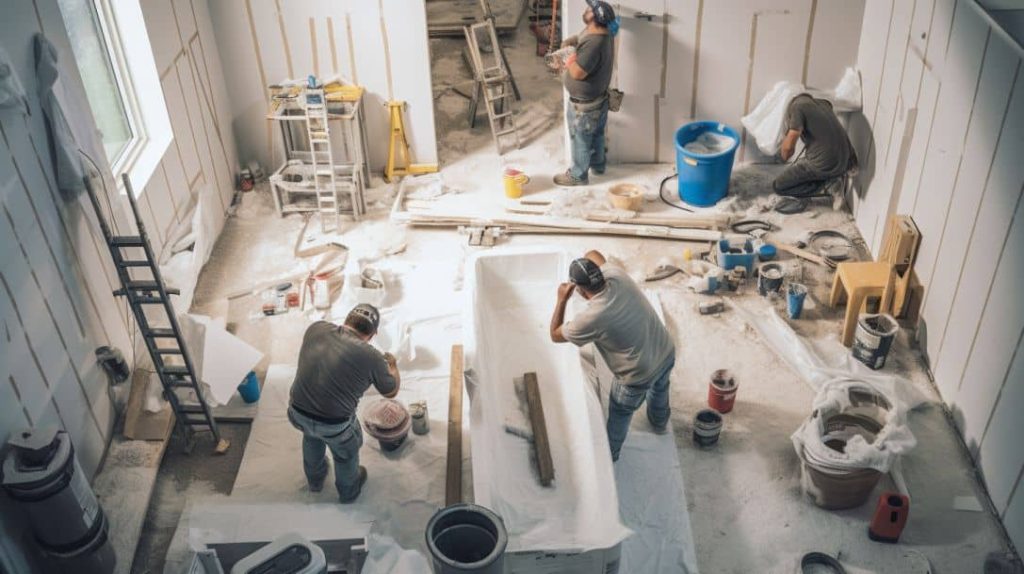
Step-by-step guide to installing EIFS
Installing EIFS, or Exterior Insulation and Finish Systems, on your bathroom walls can be an achievable process when done correctly. Here is a step-by-step guide to ensure a successful installation:
- Start by ensuring that the wall surface is clean and free of any dirt or debris.
- Apply an adhesive to the back of the insulation board. This could be typically made from one-part polyurethane foam.
- Next, adhere the insulation board to the wall surface.
- Ensure the insulation boards are tightly butted together with no gaps between them for maximum energy efficiency.
- The basecoat application comes next. It comprises a layer of polymer-modified cement mixed with fibers for impact resistance.
- After applying the basecoat, embed a fiberglass mesh into it while it’s still wet and smooth out any wrinkles or bubbles.
- Once the basecoat is dry, apply a finish coat – giving it texture using a plastic trowel in long sweeping strokes.
- Let this coat dry completely before applying paint or any other finishes.
Hiring a professional vs. DIY
Hiring a professional EIFS contractor or opting for a DIY approach involves considering several factors.
| Hiring a professional | DIY | |
| Experience | Professional EIFS contractors bring their vast experience and knowledge to the table. They effectively complete the job with minimal errors, providing lifelong durability and curb appeal. | DIY installation might lack the necessary expertise, possibly leading to substandard outcomes and long-term issues. |
| Architectural Detailing | Skilled EIFS applicators can create intricate exterior architectural detailing. In conventional construction methods, achieving such complexity would typically be cost-prohibitive. | A DIY approach might not entail the proficiency required to create complex architectural details, potentially compromising on aesthetics. |
| Durability | Professional installation assures more durability due to the inclusion of a fiberglass layer in EIFS, making it superior to traditional stucco. | For DIY enthusiasts without training in EIFS application, achieving the same level of durability might be challenging. |
| Installation success | Utilizing experienced professionals specializing in EIFS installation ensures successful and long-lasting results, thereby avoiding potential problems. | While a DIY approach may initially seem cost-effective, potential errors could lead to long-term issues, resulting in increased costs down the line. |
Therefore, while the DIY route may initially seem appealing, hiring a professional EIFS contractor is the recommended course for most homeowners. Their expertise and experience are invaluable for achieving the best outcomes in bathroom renovations.
Is EIFS Right for Your Bathroom Renovation?
In this section, we’ll delve into key factors to contemplate while determining if EIFS is the ideal solution for your bathroom remodeling project, before drawing conclusions on whether this innovative insulation system can meet your design and functionality needs.
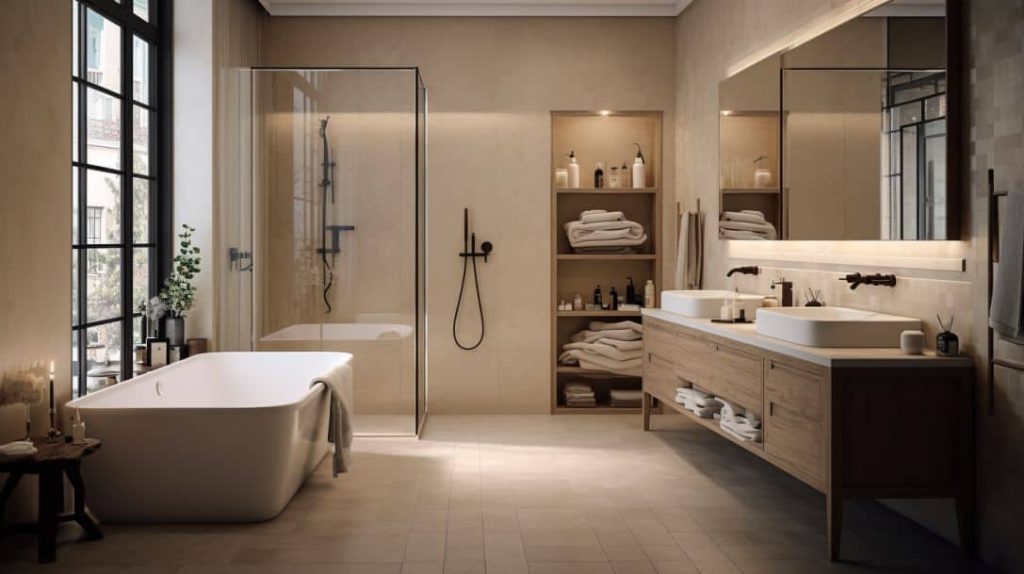
Factors to consider
Deciding to use EIFS for your bathroom renovation requires careful consideration of several factors.
- Evaluate your need for improved insulation: EIFS boasts a higher R-value compared to traditional stucco, making it an excellent choice for better insulation and preventing cracks.
- Consider the appearance: Many homeowners opt for EIFS due to its flexibility in design – offering a modern aesthetic that can significantly enhance your bathroom’s appearance.
- Think about energy efficiency: Several case studies validate the energy savings associated with EIFS, making it a great option if you’re looking to reduce energy usage.
- Assess the installation process: Although installing EIFS is a bit more complex than traditional siding or brick exteriors, the long-term benefits often outweigh the initial setup challenges.
- Understand waterproofing needs: With strong waterproofing characteristics, EIFS can offer superior moisture protection – critical in bathrooms where high humidity levels are common.
- Weigh up costs: While initial costs may be higher, potential tax credits and rebates can offset these expenses over time; plus, you stand to save money on energy bills due to improved insulation.
Conclusion
Taking everything into consideration, choosing EIFS for your bathroom renovation might be one of the best decisions for long-term savings and improved energy efficiency. Its impressive moisture resistance and control capabilities set it apart from traditional construction materials.
Not only does it reduce air infiltration, leading to decreased usage of heaters or air conditioners, But also it prevents harmful mold growth that often results from trapped moisture inside walls.
This way, opting for EIFS supports a healthier living environment while giving you an opportunity to achieve modern aesthetics in your bathroom design. Despite some concerns with potential water damage and installation costs, these issues can be mitigated by ensuring proper installation from experienced professionals or through diligent maintenance practices; making EIFS a worthy investment for your home improvement project.
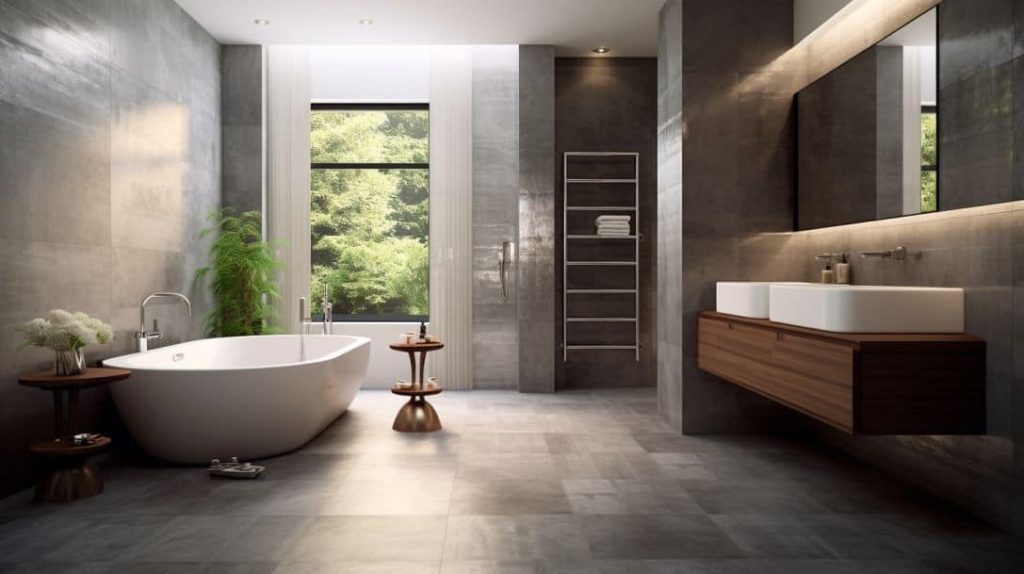
FAQs
What are the benefits of using EIFS in bathrooms?
EIFS offers superior moisture and mold resistance, making it an excellent choice for bathrooms. The multiple layers provide an effective barrier against heat and moisture transfer. EIFS also resists cracking caused by shifting foundations or temperature changes. Its durability is a major plus in a high-humidity environment like a bathroom.
Does EIFS really save energy in bathrooms?
Yes, studies show EIFS can reduce air infiltration by up to 55% compared to traditional materials. The continuous insulation provided stabilizes indoor temperatures, decreasing energy used for heating and cooling. EIFS improves the thermal efficiency of bathrooms, resulting in significant energy savings.
What is the installation process for EIFS?
The EIFS installation process involves multiple steps: cleaning the wall surface, applying adhesive, attaching insulation boards tightly without gaps, applying a fiber-reinforced base coat, embedding mesh, applying texture finish coat, and painting. Hiring a professional EIFS contractor is recommended for proper installation and maximum durability.
How does EIFS compare to traditional stucco?
EIFS offers higher durability, energy efficiency, and flexibility compared to traditional stucco. The fiberglass layer in EIFS provides more weather resistance. It also has a higher R-value for better insulation and fewer cracks. EIFS resists fading, chalking, and yellowing better than stucco. While stucco is cheaper upfront, EIFS proves more cost-effective long-term due to lower energy and repair costs. Overall, EIFS outperforms traditional stucco for bathroom renovations.
Is EIFS more expensive than traditional materials?
The initial cost of EIFS may be higher than traditional stucco or siding. However, it leads to long-term savings from energy efficiency, low maintenance needs, and resistance to damage. Potential tax credits and rebates also improve cost-effectiveness. Overall, EIFS is a smart investment for bathroom renovations.


